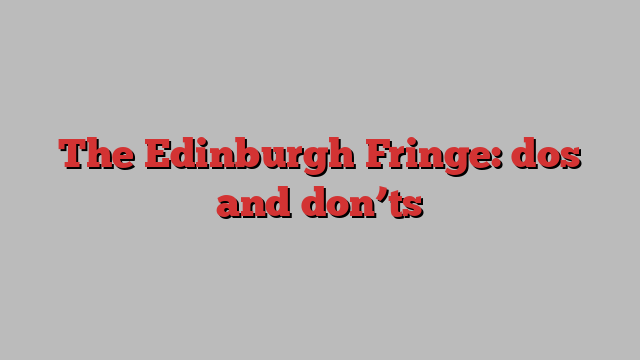
This article is part of FT Globetrotter’s guide to Edinburgh
Powder is chucked on to the stage, followed by a leaping woman in a parrot costume. She announces that this is Tchaikovsky’s Swan Lake, then proceeds to explode the plot in bouts of absurdist clowning. Nobody in the audience knows what is happening, nor are we surprised: this is the annual Edinburgh Fringe festival — and acts like this are par for the course.
The Fringe, the largest performing-arts festival in the world, takes over Edinburgh every August and transforms a city of 560,000 people into a teeming international hub with an atmosphere of chaos and creative energy. There are few rules to the Fringe, but there are survival strategies to know before you go, from how to pack and dress appropriately to effectively planning a show itinerary — and escaping the Fringe entirely.
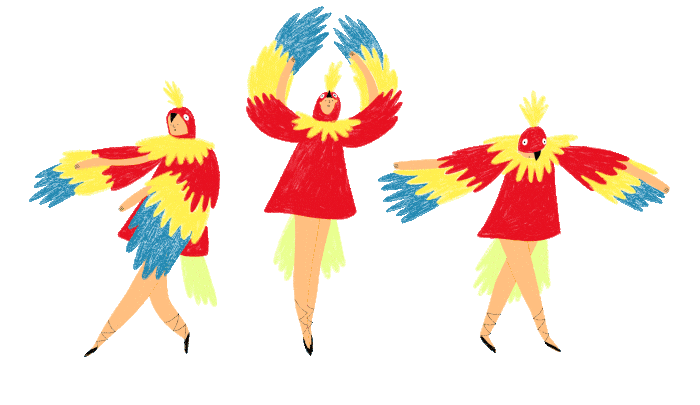
Though it now welcomes performers and visitors in the hundreds of thousands, the Fringe started almost accidentally. In 1947, Edinburgh Council launched an international festival aimed at reuniting people through the arts after the trauma of war (it is also still held every summer in the city). When eight uninvited Scottish theatre companies turned up to gatecrash, capitalising on a ready-made audience to promote their experimental shows, they laid the foundation for the festival as we know it today.
The Fringe now includes more than 3,000 shows and has launched the careers of some of the biggest names in the performing arts, including Phoebe Waller-Bridge, who premiered her one-woman show Fleabag at the festival in 2013, and actors Benedict Cumberbatch, the late Alan Rickman and comedian Rowan Atkinson. More established acts make up the programme’s big tickets, but it’s also celebrated for its amateur performances, up-and-coming shows and free stand-up comedy. These range from the brilliant and avant-garde to the indecipherable and downright unhinged.
It continues to run alongside the original Edinburgh International Festival, which broadly hosts opera, theatre and music from professional performers, while the same period also sees the Edinburgh International Book Festival grace venues across the city. From an audience perspective, the three festivals blend together, overlapping and complementing each other throughout August.
When I lived in Edinburgh, I used to marvel at the characters who descend on the city from around the world — many with job descriptions you never knew were possible (“interpretive dream dance analyst”, for example). Most residents tend to have a love-hate relationship with the month of August, as they trudge through the hordes on the streets and watch their infrastructure creak and groan.
At the end of the day, it’s inevitable: the city will be hard to get around, and with so much to do and see, you need to be prepared. Below are my top tips for navigating the riot that is the Edinburgh Fringe.
Last-minute accommodation
In recent years, the Scottish government has clamped down on casual rentals such as Airbnb — long a feature of the Fringe — leaving mostly only licensed B&Bs and hotels as options. Most are booked up months in advance, so hopefully at this point your accommodation is already arranged.
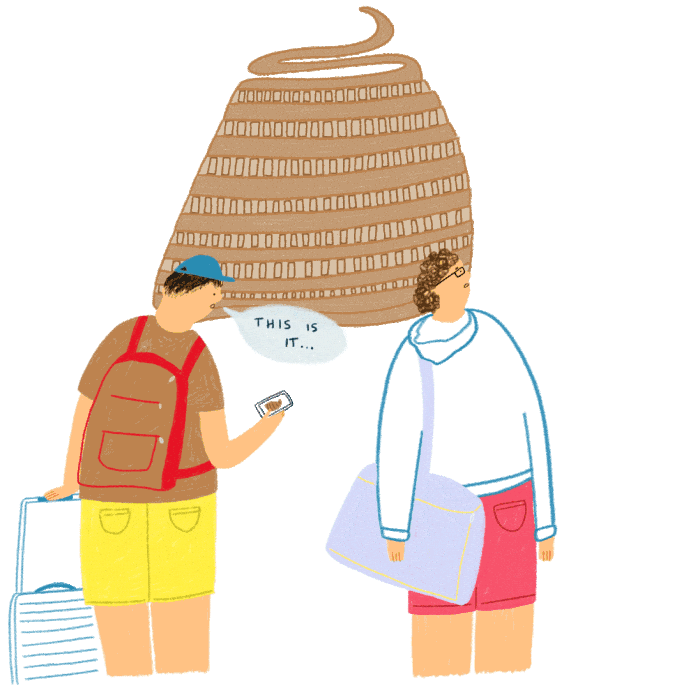
At the time of writing, some of the newer hotels in town such as the W Edinburgh and the “aparthotel” Eden Locke are still taking bookings, which are around £400-500 a night. (The W offers amazing views, but locals will tease you for staying in the “The Jobby” — a Scots word for turd and the nickname given to the building due to its resemblance to the poo emoji.)
You may be better off finding accommodation outside of Edinburgh. There are plenty of lovely seaside towns only 40 minutes away on a regular bus service, such as North Berwick and Queensferry, while 45 minutes to an hour by train are Berwick-upon-Tweed (in England), Stirling and Glasgow. Most trains run until midnight so you can catch a late show, then retire to the peace of your hotel.
Packing essentials
Edinburgh is a city of hills and dramatically shifting weather (don’t be fooled by locals wearing shorts and T-shirts in August — they have been hardened by a lifetime of Scottish winters). One minute you will be sweating from climbing staircases, the next shivering and sheltering under the awning of a packed Fringe venue.
Pack an item of clothing for each season into a backpack, majoring on waterproofs, and wear comfortable footwear. I usually have sunglasses, sunscreen, a T-shirt, a light down jacket (Uniqlo does affordable foldable ones) and a raincoat with me. Don’t worry that you look like a tourist — everyone will assume you are one anyway during Fringe. If you need a jumper, head for the nearest branch of Armstrong’s Vintage stores for second-hand, well-priced cashmere.
Where to explore
The centre of the action is the Royal Mile, which is anchored by the city’s striking medieval castle. The street is nightmarish and amusing at the same time, jam-packed with crowds, hawkers and street performers, many advertising their upcoming shows in the most eye-catching way possible. At some point you have to take in the chaos here, but to avoid the crowds, go down a level and walk the cooler, shaded streets of Cowgate — host to the famed Fringe venue known as “the Underbelly”.
The many venues on Cowgate display shows on their boards, offering a starting point to peruse, and you can easily head to other Fringe hubs from here. The Pleasance features a relaxed courtyard surrounded by a variety of venues, while not far away, George Square Gardens — normally Edinburgh university’s quiet library green — boasts a lively beer garden with circus tents, buskers, band stands and food trucks.
These are the main hubs, but Fringe venues are located all over town, such as the multi-use Summerhall. It’s worth going further afield to catch an artist on a smaller budget who couldn’t afford to stage a show in the centre of town. Stroll amid the grand Georgian architecture of the New Town, which is home to both large venues, such as the Assembly Rooms, for established artists, and smaller, quirkier venues like The Stand comedy club and Fingers Piano Bar. From New Town, head west and wander the gothic church venues of the West End, then retrace your steps and head east to Leith, which has some lesser-known venues down by the waterfront among its excellent bars and restaurants.
Planning what to see
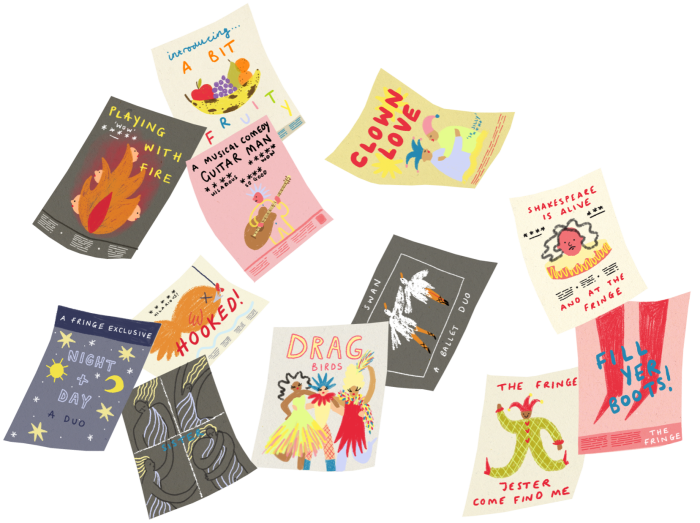
Attending during the first week is for the critics and the brave. If you go early, unguided by reviews, look up the artists on social media first. Do they have material you can watch to get an idea of what their performance may be like? Are they well-loved Fringe returnees or award-winners, or have other artists recommended their shows? Best yet, can you ask friends in the arts industry for recommendations? This is especially useful for international performers who don’t receive UK reviews.
If you’re taking a blind punt on shows, find discounts (many are free entry or pay what you can/want), but the most sought-after productions are usually ticketed around £8 to £30, which can add up quickly). On the first Monday and Tuesday of the Fringe, many shows offer two-for-one deals, after which the Half Price Hut, near St Giles Cathedral, offers a daily selection of shows at 50 per cent off. In line with its goal to maintain affordability, 50 per cent of the International Festival’s programme is priced at £30 or less, with £10 concession tickets available for every performance and thousands of free tickets on offer for young musicians.
By the second or third week, much of the programme will have been reviewed, providing a better idea of what might be worth seeing. As well as reading the broadsheet critics, platforms such as Broadway Baby, The Skinny and The List are buzzing repositories of Fringe reviews.
Note: while at the Fringe, you will be handed tons of paper flyers advertising shows. If you’re in a hurry, adopt a polite but firm non-engagement strategy, but otherwise be open to suggestions. A crucial Fringe experience is being roped into a random production by a persuasive leafleteer. Worst case it will be terrible, providing a new baseline for everything else to surpass. Best case is you catch a future legend in their early career. However, sit near the back of free, unreviewed comedy — that way you can sneak out if it is truly terrible.
Food and drink
There are beer gardens and food trucks galore at Fringe venues, but wolfing down street grub can start to feel unfulfilling. For a quick meal, the areas around some of the main hubs are home to plenty of excellent walk-in Asian and north African eateries. You can sample excellent Egyptian food at The Nile Valley Café, fragrant curries at Mosque Kitchen and Mother India’s Café, or slurp noodles at the countless ramen bars and Japanese restaurants around the university (Ikigai and Sakae are favourites). Upscale restaurants serving haute Scottish cuisine such as Purslane, Stac Polly and Fhior will need to be booked in advance, but they do accept the occasional walk-in.
Further afield, Radicibus is an excellent organic Italian eatery on the Water of Leith at Stockbridge, and Forage & Chatter offers a menu made exclusively with ingredients foraged or hunted in Scotland. The Port of Leith Distillery is worth a ride to the end of the tramline to escape the crowds. It’s a former multi-storey car park transformed into a sleek hypermodern distillery and restaurant, with 360 degree views across the Firth of Forth waters. Best to come here at sunset.
Escaping the Fringe
The Fringe is exciting but tiring. It’s everywhere in Edinburgh, however, you can find peace by leaving the centre and climbing one of the city’s many hills, such as Arthur’s Seat, Blackford Hill or Corstorphine Hill. Alternatively, stroll through the Royal Botanic Garden or along the Water of Leith Walkway to Dean Village one way and the sea the other. After that, take a dip at Portobello Beach or Cramond Island — they’re only a short bus ride away.
The Edinburgh Fringe festival runs from August 2 to 26 2024
Programme tips
August brings three major festivals to the Scottish capital — the Edinburgh International Festival, the Edinburgh International Book Festival and the Edinburgh Fringe. Some programme highlights:
Comedy Reliable big names in comedy such as Hannah Gadsby, Nish Kumar and Dara Ó Briain are on the programme this year, alongside new, highly anticipated acts like the Edinburgh Comedy-award nominee Ania Magliano and her show Forgive Me, Father. The producers of Fleabag and Baby Reindeer at the Fringe will premiere VL, a riotous comedy about young boys navigating sexual anxieties and social status in a small-town Scottish school. See what you find down in the free venues along Cowgate.
Music The grand gallery of the National Museum of Scotland will be transformed into the ancient Greek city of Thebes for Scottish Opera’s performance of Igor Stravinsky and Jean Cocteau’s Oedipus Rex. At the Festival Theatre is Komische Oper Berlin’s production of Mozart’s The Marriage of Figaro, directed by Kirill Serebrennikov (of Limonov: The Ballad film fame). Contemporary musicians include Cat Power singing Bob Dylan, Youssou N’Dour and the mighty 80-piece Scottish GRIT Orchestra.
Theatre Critics are buzzing about the gender-flipped Cyrano de Bergerac retelling, while I Sell Windows explores a Black woman’s journey to self-discovery and forgiveness after the death of a loved one. The Shroud Maker is a dark comedy about life in Palestine. A History of Paper is a quirky musical love story, while Love Beyond uses sign language to convey a father’s struggle with dementia.
Literature Booker Prize-nominated author Elif Shafak will speak about her new novel that explores profound connections across borders and the mysteries of water. Margaret Atwood will be delivering a talk (remotely) about practical utopias and resetting our relationship with the planet, while chef Jeremy Lee, author of Cooking, will appear in a conversation with Marjorie Lotfi that is almost certain to make your stomach rumble. The FT’s AI editor Madhumita Murgia appears alongside academic Georgina Voss (author of Systems Ultra) to probe the ethical, moral, and practical questions around technological advance.
Dance There is a genre of dance that has become associated with the month of August: moody, darkly lit contemporary with interpretative visions. There will be plenty of that, but also Brazilian and moves reimagined to Sufi poetry with Song of the Bulbul. To dance a proper ceilidh, head to the Stramash pub.
— Camilla Bell-Davies
Tell us about your Edinburgh Fringe experiences — or any tips you might have to make the most of the festival — in the comments below. And follow FT Globetrotter on Instagram at @FTGlobetrotter
Cities with the FT
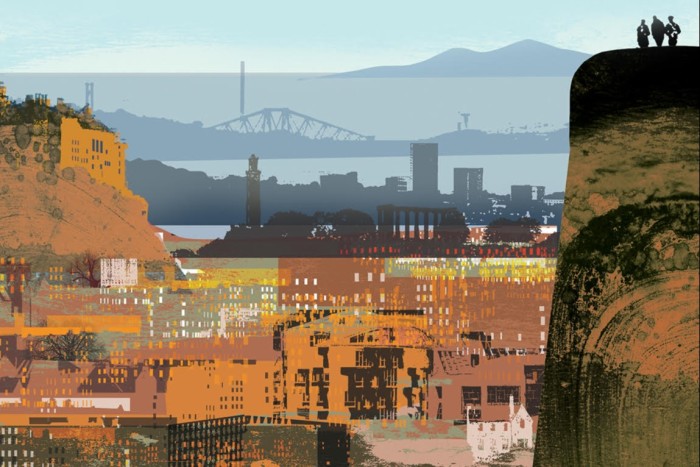
FT Globetrotter, our insider guides to some of the world’s greatest cities, offers expert advice on eating and drinking, exercise, art and culture — and much more
Find us in Edinburgh, Milan, London, Tokyo, New York, Paris, Rome, Frankfurt, Singapore, Hong Kong, Miami, Toronto, Madrid, Melbourne, Copenhagen, Zürich and Vancouver